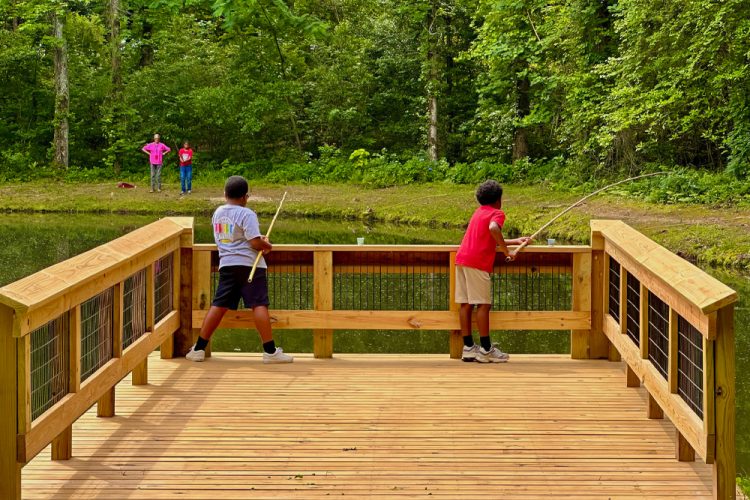These kids are learning how to fish in the Alabama Nature
Center’s catfish pond during a school field trip.
Alabama Wildlife Federation
Story and photos by Anietra Hamper
Keeping Our Fishing and Hunting Heritage Alive.
The heritage of Elmore County in central Alabama is rooted in fishing and hunting, and it is as central today as it has been for centuries. The non-profit Alabama Wildlife Federation is responsible for keeping that heritage alive and making sure that it is passed down to future generations.
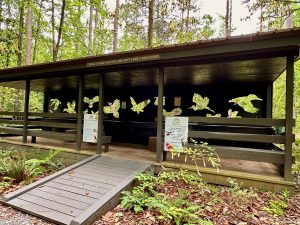
“We’re celebrating our 90th anniversary this year. We’re the oldest and largest citizens conservation organization here in Alabama, and we’re a private non-profit entity,” said Tim Gothard, Executive Director, Alabama Wildlife Federation. “At our Alabama Nature Center facility, we teach youths and adults about how to strike the balance between use, management and protection of our wildlife and related natural resources.”
The Alabama Wildlife Federation was founded in 1935 by a group of avid sportsmen to preserve the wildlife and natural resources of the region and provide opportunities for future generations to enjoy and protect it. One of the ways it is doing this is through the Alabama Nature Center and the hands-on programs it offers to public visitors and local school children.
An Outdoor Sanctuary
The Alabama Nature Center is on the Lanark Estate in Millbrook. Once inside the facility, which is easily accessible from town, visitors are surrounded by 420 acres of natural environment, making them forget they are even in a city. The forests, fields, streams, ponds and wetlands make for an ideal outdoor classroom where visitors can learn about the plants, animals, land and aquatic environments in the region.
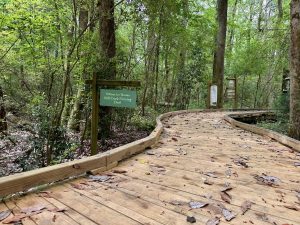
“It’s kind of like an island if you will, in and around urban and suburban development, and it’s a great asset to the community and the state. It allows us to do exactly what our mission is and that’s to promote the balance between use management and protection of our natural resources,” said Gothard.
A five-mile boardwalk and walking trails that weave throughout the grounds showcase how plant and animal life interact throughout the changing seasons. This immersive environment gives visitors a front-row seat to all of nature’s wonders. The bird blind is one of the most popular spots at the facility.
“A lot of people come from out of town, and it’s a quiet place to sit,” said Tanner Hicks, Community Relations & Development Coordinator. “In the logbook, people can write down the date they were here and make notes about the bird species they’ve seen, where they saw them and what they were doing so others know what’s been here and know what to look for.”
The Alabama Nature Center complex includes a 25,000-square-foot NaturePlex education center, a hands-on Discovery Hall with interactive displays, educational outdoor classrooms and a theater. Local groups use it for school field trips, home school programs, day camps and programs for the public. The idea is to get people as close to nature as possible whether that is though animals encounters or walking in the creek beds to discover nature in their own unique way through passive and active educational opportunities.
“When we have planned programs where somebody is leading the education program, if it is going on that day, you can take advantage of it,” said Gothard. “Our hands-on Discovery Hall, our theater and our trails are designed to be education opportunities, but you can learn in that process on your own.”
Introduction to Nature
The Alabama Nature Center provides an important platform for introducing kids to nature at an early age in ways that engage them in their natural environment. For many of the children who visit, it is their first time walking in the woods, standing in a creek or quietly listening to the sounds of birds in the trees.
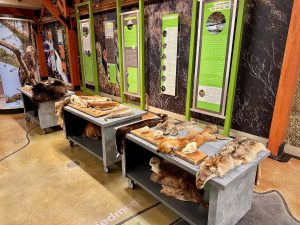
“What we provide for them at the Alabama Nature Center is an opportunity to be hands-on in the outdoors and not just study from afar,” said Hicks. “Even things they can study in a classroom from a textbook, we provide an opportunity for them to touch and feel and see and hear the things. We want them to engage in a way that they typically don’t have the opportunity to do.”
Some of the popular hands-on activities include wildlife education programs with some of the 80 animals on-site and learning how to fish in the catfish pond as part of the Lanark Field Days Field Trips.
“Most of these kids have probably never held a fishing pole in their life, never caught a fish, never held a fish, never touched a fish. This is just one opportunity we provide at the catfish pond. Sometimes we have them with their shoes off catching tadpoles or looking for aquatic life along the edges,” said Hicks.
This introduction to nature often leads to a continued interest for children to unplug from technology and seek out activities like fishing, looking for frogs and hiking.
Preservation for Future Generations
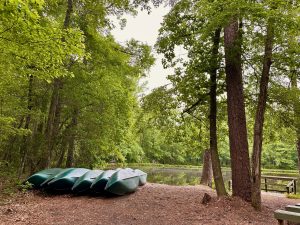
The educational drive of the Alabama Wildlife Federation pays homage to the organization’s founders, the local landowners. These foundational stewards of the organization relied on a balance of harvesting natural resources for survival while also protecting them through regulation and choices to ensure ample game and fish populations exist for generations to come. The opportunities that exist for new-to-nature visitors and those who already love the outdoors develop a future for these values that are central to the region.
“It helps develop the next generation having that understanding of natural resources, how they fit with our social and economic well-being in the state, and it positions them to be the next group of conservation leaders here in Alabama,” said Gothard.
The community engagement in this effort makes a difference too. The 15 annual Wild Game Cook-Offs hosted by the Alabama Wildlife Federation showcase how responsible hunters and anglers use their game and fish while giving local chefs bragging rights in the community. It’s also a fundraiser for continued conservation efforts.
These preservation efforts that started with the Alabama Nature Center are now expanding beyond Elmore County. The center spearheads statewide initiatives on oyster restoration, and there are plans to expand the facility into southern Alabama.
(Anietra Hamper is a career television news anchor and investigative journalist turned award-winning outdoor writer specializing in fishing and outdoor adventure. Anietra travels the world fishing for catfish and other unique species in new destinations.)


